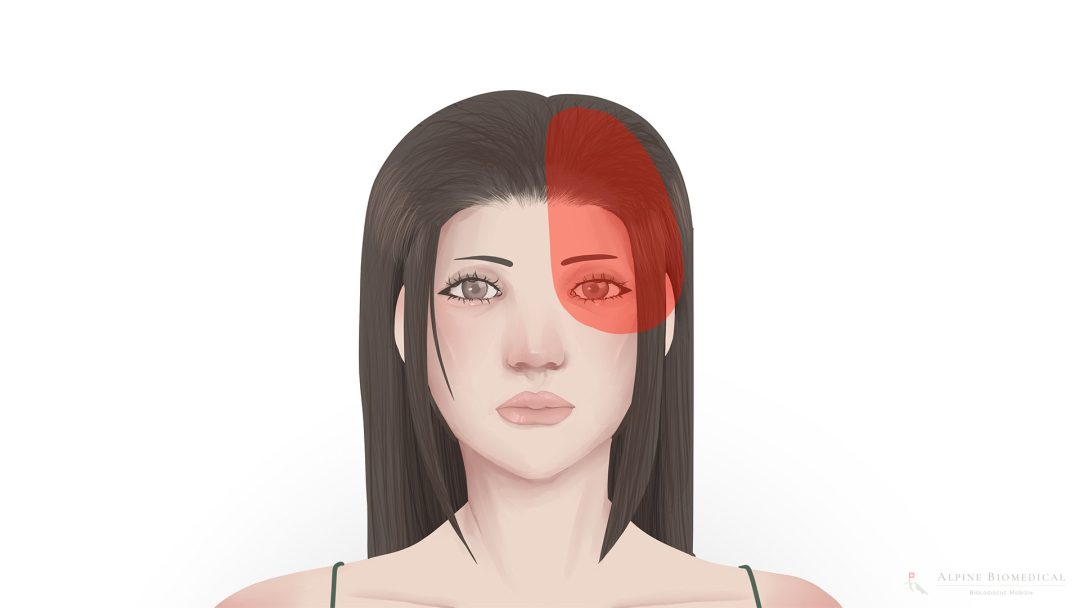Migraine

Migraine is a recurring neurological disorder that is often accompanied by unilateral headaches and is often accompanied by nausea, vomiting and increased sensitivity to noise and light. In some cases, aura phenomena also occur before the actual headache phase and can cause temporary neurological disorders such as weakness or flickering scotomas (visual field defects).
Cause of Migraine
The exact causes of migraines are not yet fully understood. It is assumed to be a multifactorial problem:
- Migraines often develop as a result of craniomandibular dysfunction (TMJ). A consultation with an experienced dentist is recommended.
- Environmental influences, such as exposure to heavy metals (e.g. mercury) or PCBs (polychlorinated biphenyls)
- Imbalance of neurohormones in the brain, especially serotonin, is associated with migraines.
- Hormonal changes, such as those that occur during the menstrual cycle, can trigger migraines.
- Lack of salt, minerals and trace elements.
- Histamine-containing foods, in the sense of a histamine intolerance. Caffeine, alcohol (especially red wine and beer), chocolate and cheese have often been identified as triggers in some people.
- Flavor enhancers such as glutamate and synthetic sweeteners such as aspartame interfere with neuronal hormones and can trigger migraines.
- Genetic factors
Diagnosis and Treatment of Migraine
The diagnosis of migraine is usually based on the typical symptoms and clinical examinations. Occasionally, imaging procedures can be used to rule out other possible causes. Analgesics such as acetylsalicylic acid and non-steroidal anti-inflammatory drugs (NSAIDs) are standard in the conventional treatment of migraine. Mild and moderate migraine attacks are initially treated with these substances. Triptans (serotonin receptor agonists) are used for severe headaches and migraine attacks. Chronic migraines are mainly treated with medication, supported by lifestyle management and behavioral therapies. Psychotherapeutic interventions can be used to learn stress management and relaxation techniques.
An individualized approach to identify causative triggers is crucial in the treatment of migraine, this should include diagnostics such as bloodtests. Proven deficiencies in vitamins (for example a vitamin D deficiency or B12 deficiency), minerals (such as a magnesiumdeficiency) and trace elements should be individually and correctly replenished. Diagnosed toxin loads should be professionally eliminated by experienced therapists.
A food diary can also be helpful in identifying personal triggers.
It is always advisable to have the entire masticatory system checked by an experienced dentist to rule out TMJ as the cause. Compressed and “misaligned” temporomandibular joints due to an incorrect bite can trigger TMJ symptoms, including migraines. This point is often neglected in the case of migraines.
Med. pract. Dana Hreus M.A.
A biological-integrative therapeutic approach can illuminate and address the causes of migraines from all sides.

Further information
The information listed contains relevant topics and serves to improve understanding.